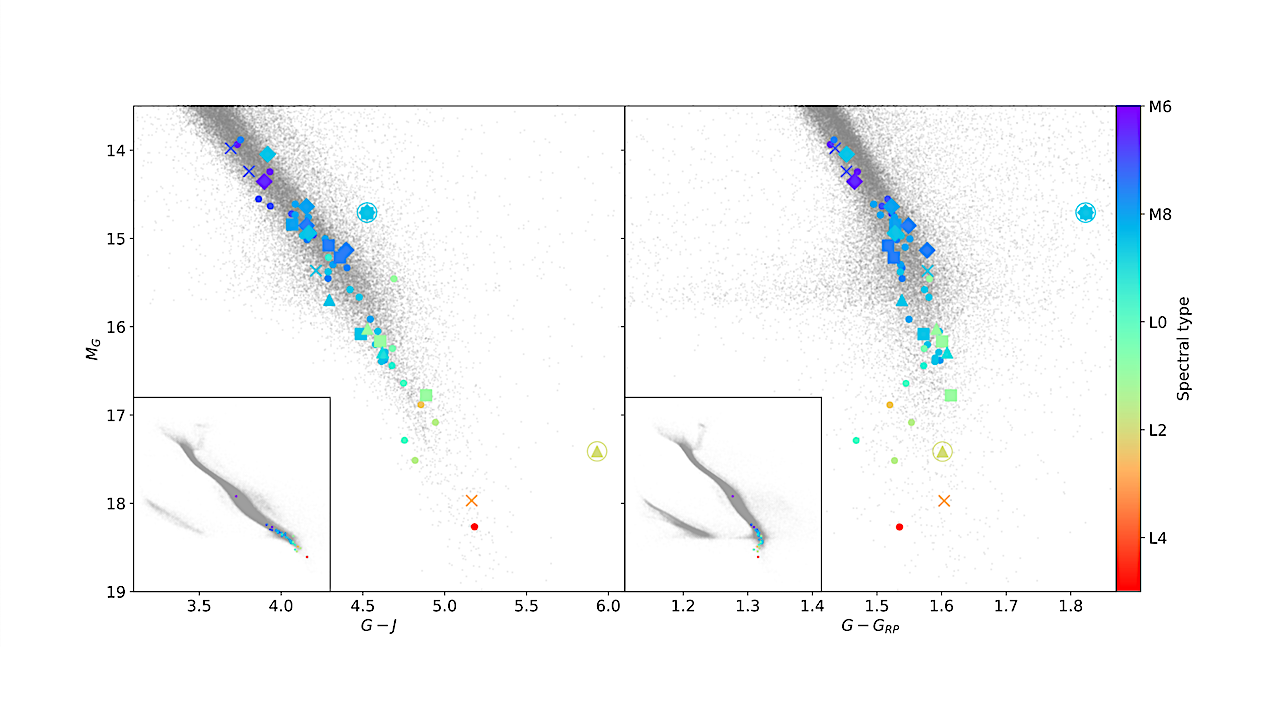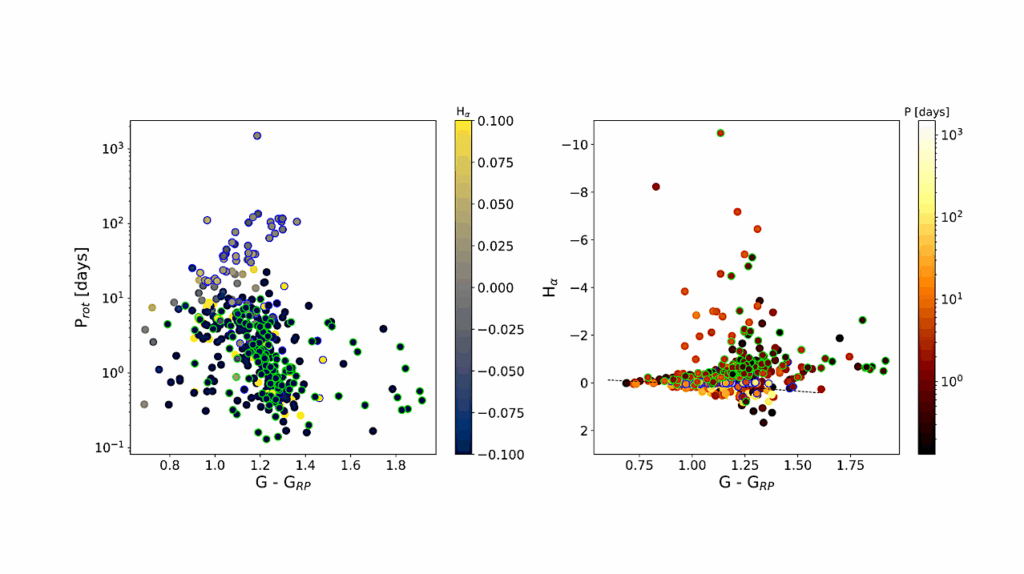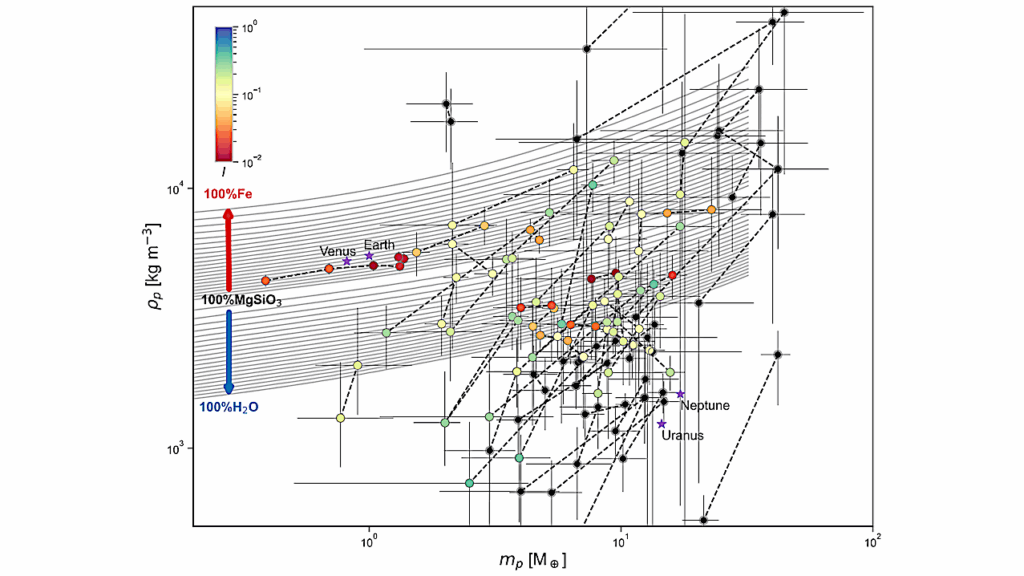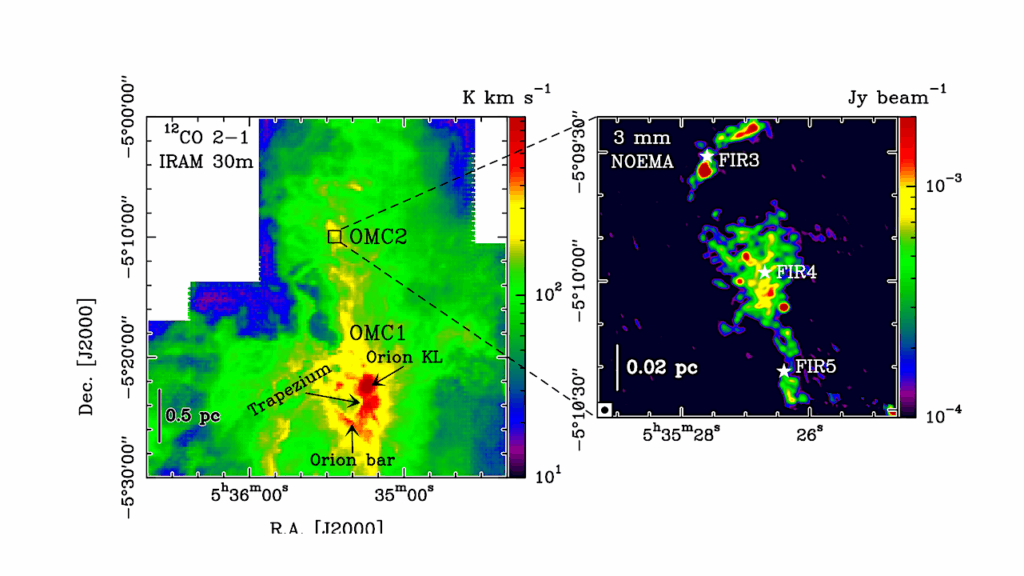Near-infrared Spectroscopic Characterisation Of Gaia Ultra-cool Dwarf Candidates; Spectral Types And Peculiarities

Context: The local census of very low-mass stars and brown dwarfs is crucial to improving our understanding of the stellar-substellar transition and their formation history. These objects, known as ultra-cool dwarfs (UCDs), are essential targets for searches of potentially habitable planets. However, their detection poses a challenge because of their low luminosity. The Gaia survey has identified numerous new UCD candidates thanks to its large survey and precise astrometry.
Aims: We aim to characterise 60 UCD candidates detected by Gaia in the solar neighbourhood with a spectroscopic follow-up to confirm that they are UCDs, as well as to identify peculiarities.
Methods: We acquired the near-infrared (NIR) spectra of 60 objects using the SOFI spectrograph between 0.93 and 2.5 microns (R∼600). We identified their spectral types using a template-matching method. Their binarity is studied using astrometry and spectral features.
Results: We confirm that 60 objects in the sample have ultra-cool dwarf spectral types close to those expected from astrometry. Their NIR spectra reveal that seven objects could host an unresolved coolest companion and seven UCDs share the same proper motions as other stars. The characterisation of these UCDs is part of a coordinated effort to improve our understanding of the Solar neighbourhood.
T. Ravinet, C. Reylé, N. Lagarde, A. Burgasser, R. L. Smart, W. H. Moya, F. Marocco, R.-D. Scholz, W. J. Cooper, K. L. Cruz, J. G. Fernández-Trincado, D. Homeier, L. M. Sarro
Comments: Based on observations made with the ESO New Technology Telescope at the La Silla Observatory under programme 106.214E.001 and 108.22G4.001. Accepted by A&A on the 30/01/2024
Subjects: Solar and Stellar Astrophysics (astro-ph.SR); Earth and Planetary Astrophysics (astro-ph.EP); Astrophysics of Galaxies (astro-ph.GA)
Cite as: arXiv:2402.09783 [astro-ph.SR] (or arXiv:2402.09783v1 [astro-ph.SR] for this version)
Submission history
From: Thomas Ravinet
[v1] Thu, 15 Feb 2024 08:31:13 UTC (3,001 KB)
https://arxiv.org/abs/2402.09783
Astrobiology,








